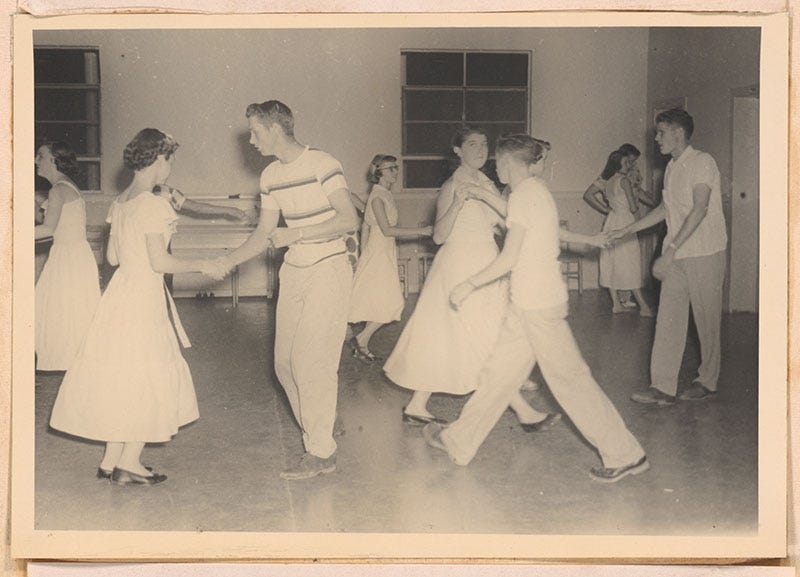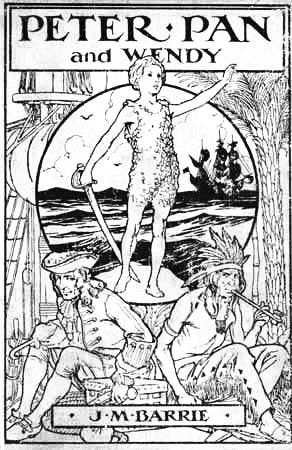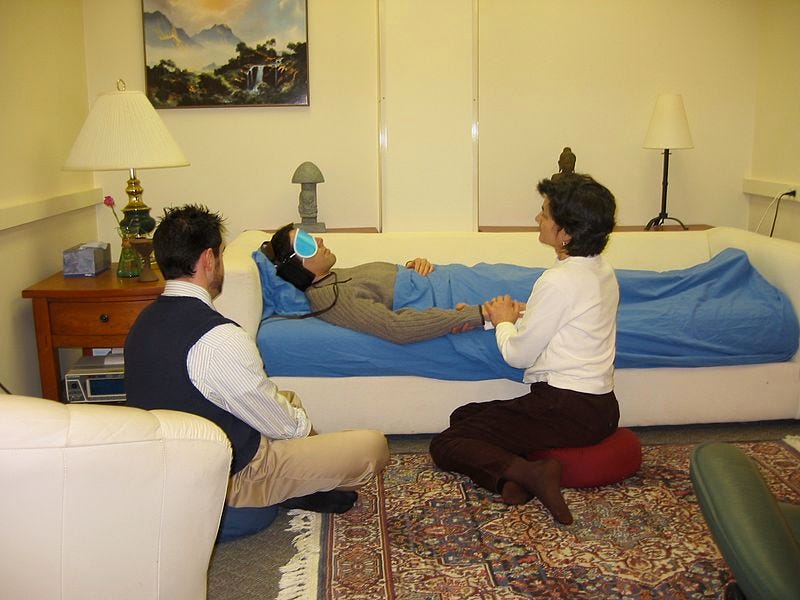It’s not the psychedelic renaissance. It’s the psychedelic adolescence.
Reflections on a rough week at the FDA
When I was 15, my favorite word was “hypocrite.” I loved to weaponize this SAT word at the adults in my life who, in my youthful opinion, held up one set of ideals while behaving in another, in seemingly entirely opposite way. “Hypocrite” (usually accompanied by an eye roll and a sneer) summarized the righteous indignation I felt in the face of that contradiction.
As I moved into adulthood, my use of this word gradually decreased. Now, I can’t even remember the last time I used it. Why? Because the journey from adolescence is a path that takes one from the uncomplicated ideals of youth to the messy reality of adulthood. In short, you stop calling people a hypocrite because you realize you’ve become one yourself.
It seems like the “psychedelic community,” sometimes called a “renaissance,” is moving through something that might more closely approximate an adolescence.
Don’t get me wrong. Adolescences are beautiful, expansive things. Mixed amongst the gangliness and the acne is an emerging appreciation of all the things the world can hold. The possibilities seem endless and the enthusiasm with which ideals are proffered is, for a brief period, frictionless. We imagine the world as it could be, and that is a beautiful thing. Quixotic, idealistic projects are taken on. As they should be.
Then, the reality of adulthood begins to make itself known. We begin to realize the world is complicated, that things are rarely either-or, our heroes sometimes fall, and that, if we’re honest with ourselves, we’re beset with a few of our own shadows. The world is not as we hoped it would be and the adults who populate it, who now include us, are imperfect beings trying to find their way through this swamp of complexity towards something that is good, even if it’s not perfect.
The public hearing this week of the FDA Psychopharmaceutical Drugs Advisory Committee on Lykos’ midomafetamine (MDMA) assisted therapy*, with its negative 2 in favor, 9 against vote felt like dad taking away the keys to the car that we were going to borrow for prom, because we failed our midterm.
The FDA committee souring on what has, up until now, been a fairly uncriticized and enthusiastically promising treatment was based on a confluence of several factors including potential confirmation bias built into the design of the study; functional unblinding of the drug and placebo groups (in which it became obvious for therapist and subject to know who received MDMA and who did not); absence of some physiological measures (such as tests to measure the effect of MDMA on the liver and heart); lack of clarity about what is considered an “adverse event” in research language (if a subject with crushing PTSD feels euphoria on MDMA, is that a bad thing or a good thing?); and finally, a well-publicized and disgraceful episode of sexual abuse of a study subject by a therapist in Canada.
Any one of these events might have been survivable, but as committee member Melissa Decker Barone summarized, “it seems like there are so many problems with the data”, adding that “each one alone might be okay, but when you pile them on top of each other…I think there’s just a lot of questions still.”
The response from the psychedelic community was predictably shocked: how could something seemingly so perfect be rejected so resolutely? This was the beginning of the end of our psychedelic adolescence, giving way, hopefully to an embracing of psychedelic adulthood, with all its attendant complexities.
Psychedelics, in the years since the 2018 publication of Michael Pollan’s watershed book “How to Change your Mind” have enjoyed relatively little criticism, the ghost of Timothy Leary and Richard Nixon rapidly fading into the rear-view mirror, and pre-existing beliefs engendered by people’s own naturalistic experiences with psychedelics confirmed by increasing numbers of positive research studies, the findings of which were amplified in the popular media.
The adolescent struggles between identity and integrity. We want to be the full expression of ourselves, yet fear being scrutinized and misunderstood by others. For years, people who used psychedelics had to keep this under wraps for fear of being labeled drug abusers. After Pollan’s book, such use became a fashionable cipher.
The psychedelic community can sometimes be a place of what Carl Jung would call Puer Aeternus – the child that refuses to grow up and insists on freedom, rejecting restrictions on their wishes. In this simplified view of the world, conspiracies (I heard endless comments about “big pharma” in the hours following the vote), and whataboutism focused on hypocrisy (“what about opiates? Why does the FDA approve those and not psychedelics?”) abound.
A shadow-trap of adolescence when facing a significant defeat might be called premature cynicism, famously captured in Timothy Leary’s advice to “tune in, turn on, drop out.” If one feels the system is rigged, why bother trying to play by its rules?
The psychedelic community stands on an initiatory threshold between adolescence and adulthood, and I want to challenge it to step through the door.
They don’t have to, of course. It might be entirely easier to return to how it was in the past, with underground therapists providing psychedelics and states where laws have softened towards decriminalization as a means of obtaining these experiences, for those with the financial means and necessary contacts. But that perpetuates a longstanding inequity between those who can get psychedelics and those who cannot.
Having an FDA-approved psychedelic treatment means that people with commercial insurance, Medicare, or VA healthcare could also have access to these treatments. That is a force for health care equity and access for a disease that causes untoward suffering and a powerful argument for continuing this research process.
Addressing some of the concerns raised by the FDA panel will require both a bare-knuckles defense of the studies from Lykos while at the same time, surrendering some of the idealism that was entwined in the study methods.
Let’s talk about functional unblinding. The FDA committee discussed this as though this problem is unique to psychedelics. Not surprising, as subjects tend to know if they got a psychedelic or a placebo. At least Lykos asked the question about the integrity of the blind. The vast majority of antidepressant studies, for example, do not. But this unblinding happens in other medication classes, too – like psychostimulants for ADHD, antidepressants for mood disorders, and esketamine for TRD. The presence of a new side effect can tip off a subject that they are getting active drug. The improvement of a child’s hyperactivity will likely be noticed by parents. Esketamine has psychoactive effects that a placebo does not have. The blind gets lost. This needn’t be a deal breaker.
And while the charter of the FDA is to ensure that approved drugs work better than placebos in randomized, double blinded, placebo-controlled trials, the reality is that there are no placebos in clinical practice. All clinical practice is open label, and in this situation, expectancy effects contribute to patient improvement.
What probably would have helped to make a stronger case for the efficacy of MDMA separate from the psychotherapy would be if there had been an arm of the study where subjects received MDMA without therapy, or if a low dose of MDMA had been trialed as a comparator, as was suggested by the FDA in the study designs but was rejected by Lykos, based on concerns that a dose stratification study in early phase 2 trials had worsened anxiety in those randomized to a low dose of MDMA. While the intention of Lykos to not cause harm to future subjects is admirable, this caution created a significant vulnerability in the data.
All studies are written in the past by the standards that were present at their inception but will be judged on the future standards that do not yet exist. This inevitably creates unforeseeable problems. When MAPS began its trials in the late 2000’s, it was an opportunity to treat people with PTSD with MDMA in above-ground, bona fide research studies. After 40 years of the drug war, this shift created a reason for hope, and MAPS (the nonprofit progenitor of Lykos) fostered an enthusiastic subculture dedicated to the future of this treatment, however unproven it was at that moment (what else would draw 12,000 people to conference about an unapproved medication treatment?).
However, clinical research must have different priorities than clinical practice. The clinical practitioner wants to help patients, the clinical researcher needs to objectively answer a question, hence the use of placebos, standardized methods (which may not be optimum to what a patient wants or needs), and whenever possible, objective ratings of clinical change.
There was a seductive assumption made in these early days – MDMA assisted therapy works, and we just have to prove it to the FDA (rather than the academic and dull task of disproving the null hypothesis, which would be “MDMA-AT does not work for PTSD”). Beginning with the null hypothesis avoids some of the subtle confirmation biases that can sneak into a research protocol. (Rachel Yehuda and I wrote about these gaps in knowledge and how they can be filled only with slow, deliberate research last year in Psychedelic Medicine.)
Having worked on clinical trials, I can tell you that they are full of measurements, some subjective (the patient completes a survey), others intended to be objective (the researcher measures something, like a blood pressure). Of greatest ambiguity is the “AE” – adverse event – if the subject reports a headache, was it caused by the drug? We can’t know, so researchers must report it and decide later if it appears to be associated (some of these AE’s can seem absurd – if a subject were to die in a car accident while in a clinical trial, the FDA must be notified, even if it was likely totally unrelated, a determination of relationship will be made later).
Some of those objective measures of change appeared to have been interpreted in a way that made Lykos appear to be obfuscating the data to minimize drug abuse risks. We know that MDMA can sometimes make people feel good. This is not news; this is one reason why the drug is used recreationally. This euphoria is not the only mechanism of change when used in therapy (and euphoria doesn’t always appear in a MDMA therapy session), but it is a change from the subject’s baseline, and as such, it needs to be reported as a “positive adverse event”. Once it’s reported, its meaning can be analyzed, but there should not be any implication from the study sponsors that it can be ignored. Reports of Lykos minimizing AE’s are, appropriately, being investigated at study sites by the FDA, to fully protect the public. If no irregularities are found in the records, this vindication should play significantly and positively in the FDA’s final decision.
Finally, one of the uncomfortable realizations of adolescence is the realization that people are not always good, nor do they behave appropriately, and in the case of the MAPS/Lykos trial, this is best illustrated by the loathsome sexual abuse suffered by a clinical trial participant by a study therapist. The information about the sexual abuse has been brought to light, and the incident should continue to be carefully dissected to understand what went wrong and how to prevent this from ever happening again.
However, some parties who have positioned themselves as self-appointed guardians against moral turpitude continue to raise this incident in a seemingly adolescent need for certainty, with the shutting down MDMA-AT’s progress towards approval as the only acceptable outcome, an example of letting the perfect be the enemy of the good. If anything, their efforts will further push MDMA back into underground, unregulated therapy, where there is no accountability and few guardrails against bad actors, unlike the safety mechanisms that would need to accompany a REMS-guided, FDA-approved treatment.
Sadly, the superciliousness with which the critics made these arguments appears to have lost sight of the raison d’etre for this entire effort – that PTSD is a horribly debilitating illness for which we have insufficient and inadequate treatment options, and that ironically, by positioning themselves as obstructions to FDA approval, they may actually be doing more harm by keeping patients from this potentially helpful treatment.
This is undoubtedly a moment of humility and deep introspection for the those who have worked so hard to bring this work to this moment. The people at Lykos/MAPS first deserve kindness and recognition for their decades of tireless labor. Then, the hard, important work of maturation begins. FDA approval is not a certainty. It never was. The road ahead will be longer than anticipated, but it is a task we must rise to meet. Let us meet it with grace, tenacity, and remembering why we are doing this – to make the world a slightly better place, with maybe just a little less suffering from the ravages of mental illness. This moment, disappointing as it may be, is an invitation to learn, to compromise, and to change. Moving from an idealistic, perfect vision into a realistic, messy, yet actionable reality is painful, yet it is the essential task of becoming an adult.
*full disclosure, I was a study therapist for MAPP1 with minimal salary support from MPBC.
(images wikimedia commons)






Bravo, Andrew. Thanks for this thoughtful, heartfelt, and sober (!) reality-check.
I frequently say that psychiatry as a whole is still in its adolescence.